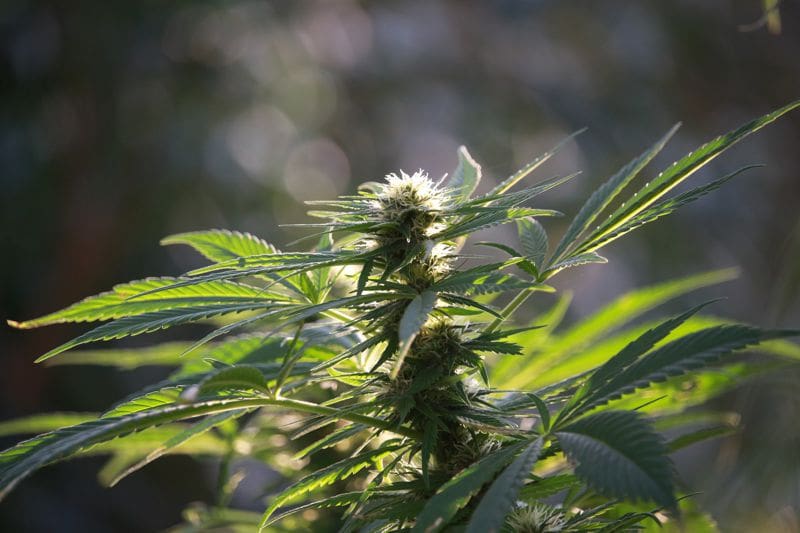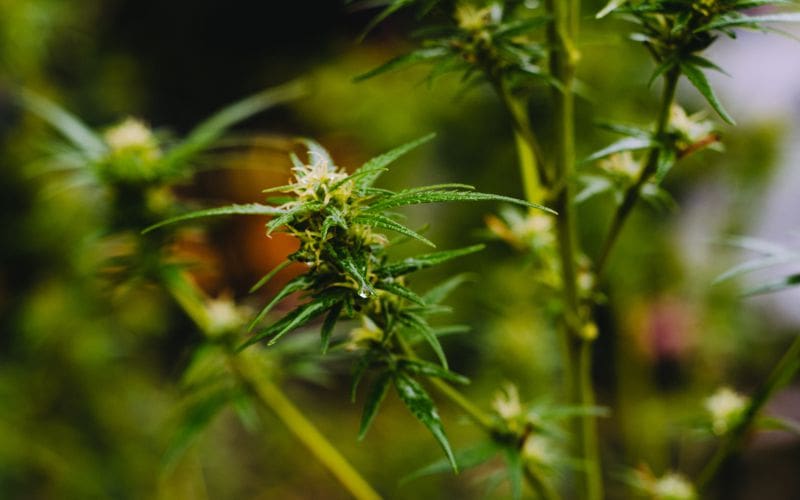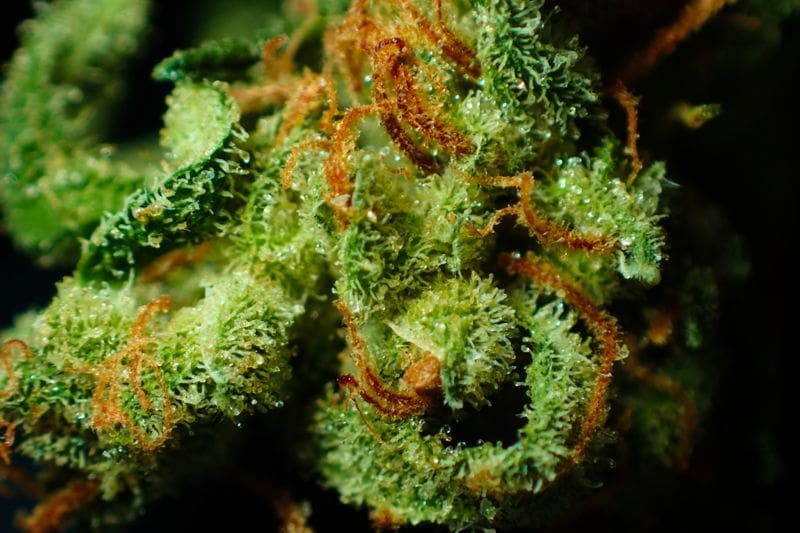So you’ve heard about different strains of cannabis and how they can have different effects, flavors, and aromas, but have you ever wondered why? I sure do, I’ve always wanted to make sure that I use the word in proper context when it comes to cannabis, so here is a detailed explanation.
Phenotype refers to the physical characteristics and traits of a plant, influenced by the interaction between its genetics and the environment. In the world of cannabis, phenotype plays a crucial role in determining the unique qualities and attributes of each strain. Let’s explore further and uncover the fascinating world of cannabis phenotype.
What is Phenotype when it comes to Cannabis?
Phenotype is an essential concept in the world of cannabis cultivation and consumption. It refers to the observable characteristics and traits of a particular cannabis plant, including its physical appearance, growth structure, leaf structure, flower structure, bud density, trichome production, aroma, and flavor. These characteristics are influenced by various factors, such as genetics, environment, and nutrition. Understanding the role of phenotype in cannabis is crucial for both growers and consumers alike.
Definition of Phenotype

Phenotype can be defined as the outward expression of an organism’s genetic makeup influenced by various environmental factors. In the context of cannabis, phenotype refers to the physical traits and characteristics of a specific cannabis plant.
Understanding Phenotype
To understand phenotype better, it’s essential to acknowledge the relationship between genotype and phenotype. Genotype refers to the genetic makeup or DNA of a cannabis plant, while phenotype represents the physical expression of those genetic traits. While genotype provides the biological blueprint, it is the phenotype that determines the plant’s appearance and characteristics.
Phenotype and Cannabis
In cannabis cultivation, phenotype plays a vital role in determining the quality, yield, and effects of the final product. Different cannabis strains exhibit distinct phenotypes that can range from short and bushy to tall and lanky, with varying leaf and flower structures. Phenotype also influences the production of trichomes, which contain the plant’s cannabinoids and terpenes, giving each strain its unique taste, aroma, and potency.
Factors Affecting Phenotype
Several factors contribute to the development and expression of a cannabis plant’s phenotype. These factors include genetics, environment, and nutrition.
Genetics
Genetics play a significant role in determining a cannabis plant’s phenotype. Different strains have varying genetic backgrounds, which result in different physical characteristics and growth patterns. Breeders carefully select and cross strains to create desirable phenotypes that exhibit specific traits such as potency, yield, and disease resistance. The genetic makeup of a plant acts as a blueprint that influences the plant’s phenotype.
Environment
The environment in which a cannabis plant is grown greatly impacts its phenotype. Factors such as temperature, humidity, light intensity, and photoperiod can all influence the plant’s growth structure, leaf structure, and flowering characteristics. Extreme temperatures or incorrect light cycles can cause stress on the plant, potentially altering its phenotype. Providing the ideal environmental conditions can help maximize the expression of desired traits.
Nutrition
Proper nutrition is essential for cannabis plants to express their desired phenotypes fully. Nutrient deficiencies or imbalances can lead to stunted growth and abnormal development of leaves, flowers, and buds. A well-balanced nutrient regimen ensures that the plant has access to all the essential macro and micronutrients it needs for healthy growth and maximum phenotype expression.
Characteristics of Cannabis Phenotype
The phenotype of a cannabis plant encompasses various characteristics that contribute to its overall appearance, potency, and flavor profile. Some key characteristics include:
Growth Structure
Cannabis plants can exhibit different growth structures, ranging from indica-like short and bushy plants to sativa-like tall and slender plants. The growth structure is influenced by genetics and environmental conditions.
Leaf Structure
Leaf structure varies among different cannabis strains. Indica-dominant strains usually have broader, wider leaves, while sativa-dominant strains tend to have longer and narrower leaves. The leaf structure can provide valuable insights into a plant’s genetic lineage.
Flower Structure
The flower structure is a crucial aspect of the cannabis phenotype. It refers to the shape, size, and density of the buds. Some strains produce dense, tightly packed buds, while others may have looser and more airy structures.
Bud Density
Bud density is a desirable trait for many cannabis cultivators. Dense buds typically indicate higher potency and yield. Breeding for increased bud density can lead to the creation of strains with compact and resinous flowers.
Trichome Production
Trichomes are tiny resin glands found on the surface of cannabis flowers and leaves, and they are responsible for producing cannabinoids and terpenes. They give the plant a frosty or sticky appearance and contribute significantly to its potency.
Aroma and Flavor
Each cannabis strain possesses a unique aroma and flavor profile, influenced by its phenotype. These characteristics are a result of the specific combination of terpenes present in the plant, which interacts with cannabinoids to produce distinct scents and tastes.
Phenotype Variations in Cannabis

Cannabis phenotypes can generally be categorized into three main groups: indica phenotype, sativa phenotype, and hybrid phenotype. Each phenotype category exhibits distinct characteristics and effects.
Indica Phenotype
Indica-dominant strains are typically associated with relaxing and sedating effects. They tend to have shorter, bushier growth structures, broad leaves, and dense buds. Indicas are prized for their ability to provide physical relaxation, pain relief, and sleep aid.
Sativa Phenotype
Sativa-dominant strains are known for their energizing and uplifting effects. They generally display taller and more slender growth structures, with long and narrow leaves. Sativas are favored for their cerebral and euphoric effects, making them popular among creative individuals and those seeking a daytime strain.
Hybrid Phenotype
Hybrid cannabis strains are a combination of indica and sativa, exhibiting a mix of characteristics from both phenotypes. They can lean towards indica or sativa dominance, depending on the specific genetics. Hybrids offer a wide range of effects, allowing for tailored experiences to suit individual preferences.
Phenotype Selection and Breeding
Phenotype selection and breeding are integral parts of cannabis cultivation, particularly for those looking to create new strains or consistently express desirable traits. Breeders select specific phenotypes based on characteristics such as aroma, flavor, potency, yield, and disease resistance.
Phenotype Selection Process
Growers often perform phenotype hunts, where they examine multiple plants from a batch of seeds to identify standout individuals with desired traits. These selected plants become the parent stock for further breeding or cloning, ensuring the preservation and expression of their desired phenotypes.
Breeding Techniques
Breeding techniques aim to create genetically stable offspring that consistently exhibit desired traits. Breeders utilize methods such as selective breeding, backcrossing, and hybridization to create new strains or stabilize existing ones.
Importance of Phenotype in Cannabis Cultivation and Consumption
Understanding the significance of phenotype is crucial for both cannabis cultivators and consumers. The phenotype of a cannabis plant can greatly impact its cultivation process, medicinal benefits, and recreational preferences.
Desirable Phenotype Traits
Cannabis cultivators seek out specific phenotype traits that align with their desired goals. These traits can include high potency, increased yield, improved disease resistance, unique flavors, or specific growth structures. Selecting and breeding for these traits allows growers to produce strains that meet market demands or personal preferences.
Medicinal Benefits
Different cannabinoids and terpenes present in cannabis strains provide various medicinal benefits. Understanding the phenotype allows medical marijuana patients to identify strains that contain specific compounds to alleviate their symptoms effectively.
Recreational Preferences
Recreational cannabis consumers often have specific preferences in terms of the effects they desire. Phenotype influences the balance of cannabinoids and terpenes, ultimately affecting the strain’s overall potency and the type of high it produces. By considering the phenotype, recreational users can choose strains that align with their desired experiences.
Phenotype and Cultivation Techniques

Phenotype affects various cultivation techniques, including growing methods, lighting, and nutrient management.
Growing Methods
Different phenotypes may require specific growing methods to maximize their potential. For example, indica-dominant strains may thrive in a Sea of Green (SOG) setup that promotes bud development, while sativa-dominant strains may benefit from topping and training techniques to control their height.
Lighting
Lighting plays a crucial role in cannabis cultivation, influencing both plant growth and phenotype expression. The intensity, spectrum, and duration of light can significantly impact the plant’s development, bud density, and cannabinoid production. Proper lighting techniques are essential in ensuring optimal phenotype expression.
Nutrient Management
The nutrient requirements of cannabis plants can vary based on their phenotypes. Indica-dominant strains might benefit from higher phosphorus levels for improved flower development, while sativa-dominant strains may require a more balanced nutrient regimen for consistent growth. Proper nutrient management is vital for achieving desirable phenotype traits.
Phenotype and Cannabinoid Profile

The phenotype of a cannabis plant is closely linked to its cannabinoid profile, which determines the strain’s overall potency and effects.
THC Levels
The phenotype heavily influences the concentration of THC (tetrahydrocannabinol) in a cannabis strain. Some phenotypes naturally produce higher THC levels, resulting in more potent effects, while others may have lower THC content but higher concentrations of other cannabinoids.
CBD Levels
Similarly, the phenotype also contributes to the CBD (cannabidiol) levels in a cannabis strain. Some strains are bred specifically for higher CBD content, offering medicinal benefits without the psychoactive effects associated with THC.
Other Cannabinoids
Beyond THC and CBD, the phenotype can influence the production of other cannabinoids, such as CBG (cannabigerol), CBC (cannabichromene), and THCV (tetrahydrocannabivarin). Each cannabinoid contributes to the unique effects and potential therapeutic benefits of a cannabis strain.
Conclusion
Phenotype is a crucial aspect of cannabis cultivation and consumption. It encompasses the observable characteristics and traits of a cannabis plant, including its growth structure, leaf structure, flower structure, bud density, trichome production, aroma, and flavor. Phenotype is influenced by genetics, environment, and nutrition. Understanding and selecting desirable phenotypes allow growers to create strains with specific characteristics, while consumers can choose strains that align with their medical or recreational preferences. Ultimately, recognizing the importance of phenotype empowers both cultivators and users to harness the full potential of the cannabis plant.
Cheers,
The Chronic Beaver
If you want to dive deeper in the world of phenotypes when it comes to cannabis, here is a webinar that breaks down in extreme detail.

